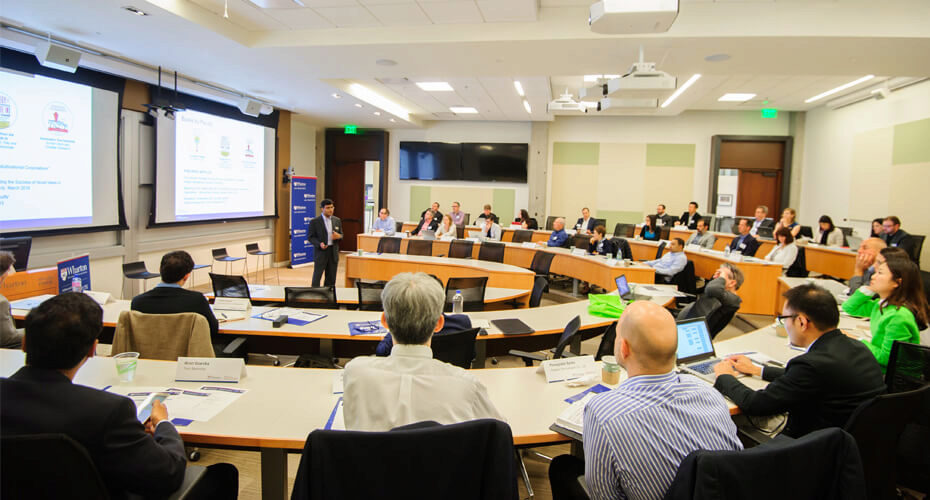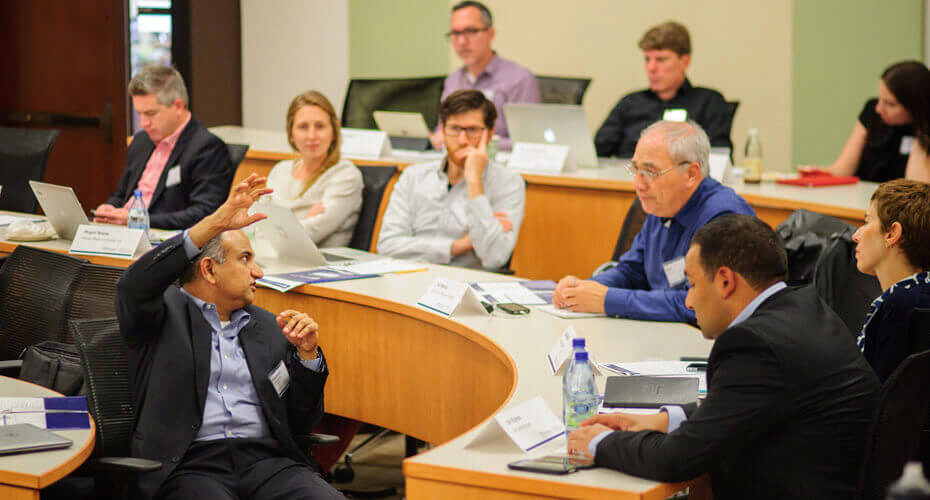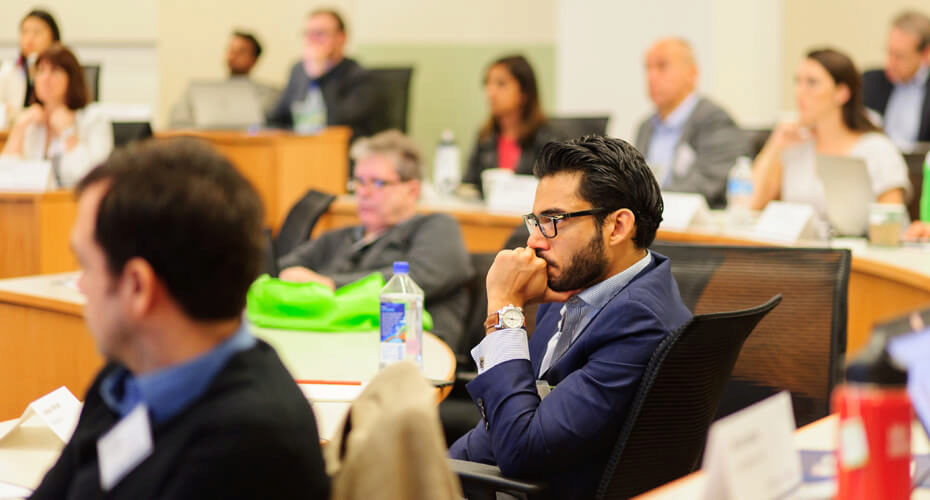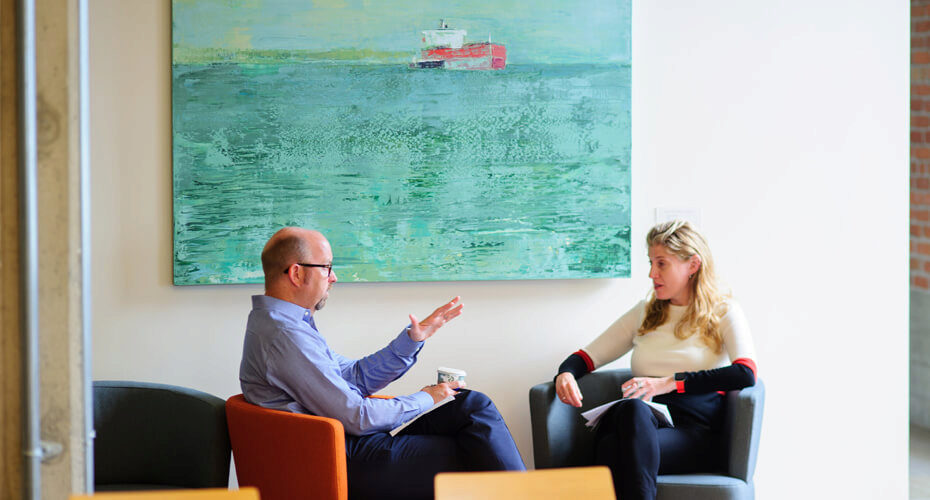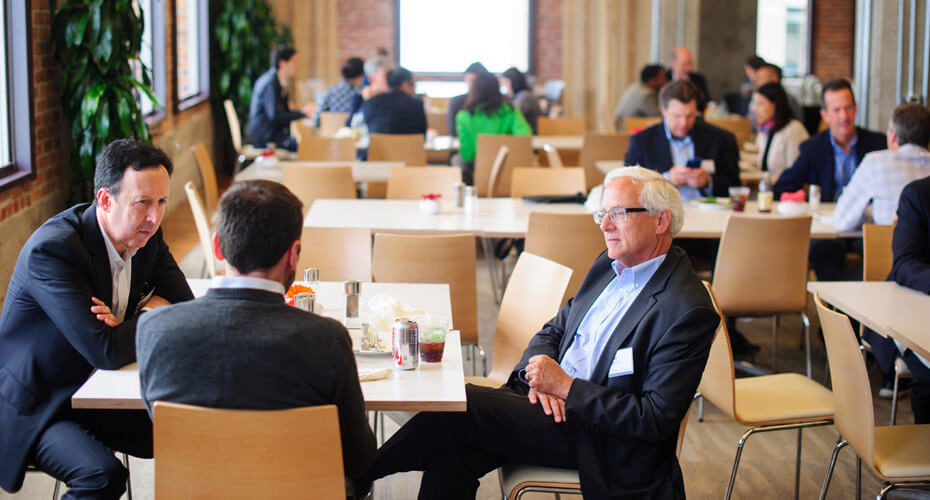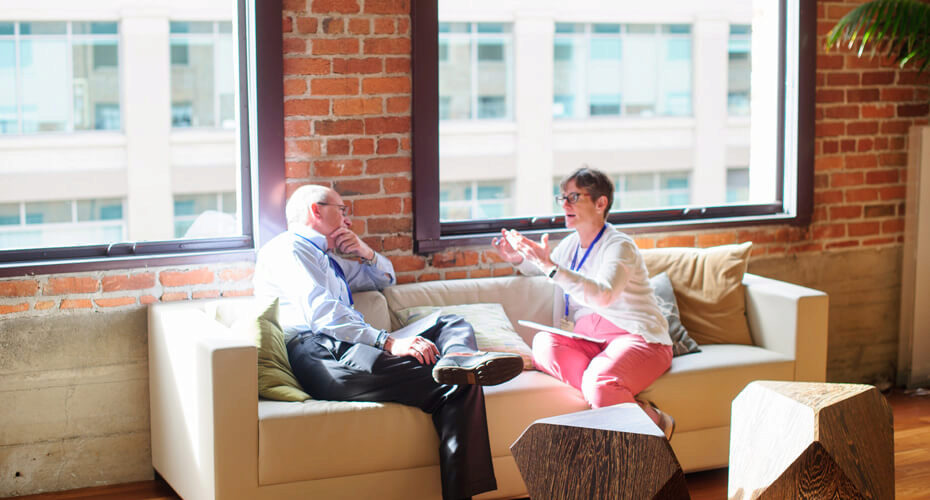Books, cameras, maps, and heart monitors. They don’t appear to have much in common, but as it happens, all of them have met the same fate: They have all been supplanted, to various degrees, by mobile phones.
“Empowered” describes the person who can access all of these tools on a sleek, four-ounce device that slips easily into a pocket or purse. The word now defines more than 60 percent of the entire planet. “Empowered end-users” are driving a tidal wave of digital disruption that is swamping entire industries.
The Mack Institute’s Spring Conference 2016, held at Wharton’s San Francisco campus, was devoted to this topic. The conference was organized by Saikat Chaudhuri, the institute’s executive director and an adjunct associate professor of management at the Wharton School, along with Scott A. Snyder, a Mack Institute Sr. Fellow and president and chief strategy officer of Mobiquity. Presentations dealt with broad themes in disruption, while panel discussions zeroed in on how digitization is specifically affecting healthcare, transportation, and retailing.
Bracing for the Digital Storm
Few companies are exempt from the changes that mobile phones are bringing about: More than 80% of Fortune 500 executives believe their operations will be significantly disrupted in the coming year, said Snyder. But only a tiny minority — just seven percent — have in-house initiatives with the scope and breadth necessary to take advantage of, or even survive, the changes they are about to experience.
Phones, says Snyder, “are changing the game of what digital is all about.” Faced with new kinds of competitors, established firms find themselves forced to enter markets that bear little resemblance to their original mission.

And if you don’t innovate, your users are likely to do it for you. When mobile customers of WellDoc’s diabetes management technology were frustrated that they couldn’t access their daily readings on their phones, they created their own ad hoc fix. Eventually, WellDoc itself began building that functionality into its product suite.
One of the most important challenges associated with digital disruption, says Snyder, involves acquiring the skills necessary to be competent with data, and large volumes of it. Mobile phone and other digital devices create torrents of data, and being able to deftly handle this information is fundamental to handling digital disruption, he says. One reason that Netflix has had such success with programs like Orange Is the New Black is that it uses its copious data sets about customer preferences to guide it in the creation of original programming.
How to Keep Innovation Efforts On Track
Dealing with disruptive innovation requires thinking in a disruptive way. But humans are creatures of habit. We have a tendency to look at the world around us in old, familiar ways, resorting to strategies that have worked in the past.
These sorts of biases can be fatal when a company is facing the sorts of never-before-seen situations presented by digitization. “We often use the wrong lens to make sense of the reality we want to change,” says Carlos A. Osorio, International Faculty Fellow at the MIT Sloan School of Management, “and then choose the wrong tools and make the wrong decisions to change it.” How, then, to make sure our biases aren’t preventing us from planning an appropriate strategic response?
One important step is to understand the trajectory of successful innovation efforts. “Discovery-driven” innovation journeys identify the major problems to be tackled at the start, and then spend the later stages of the effort refining their solutions.
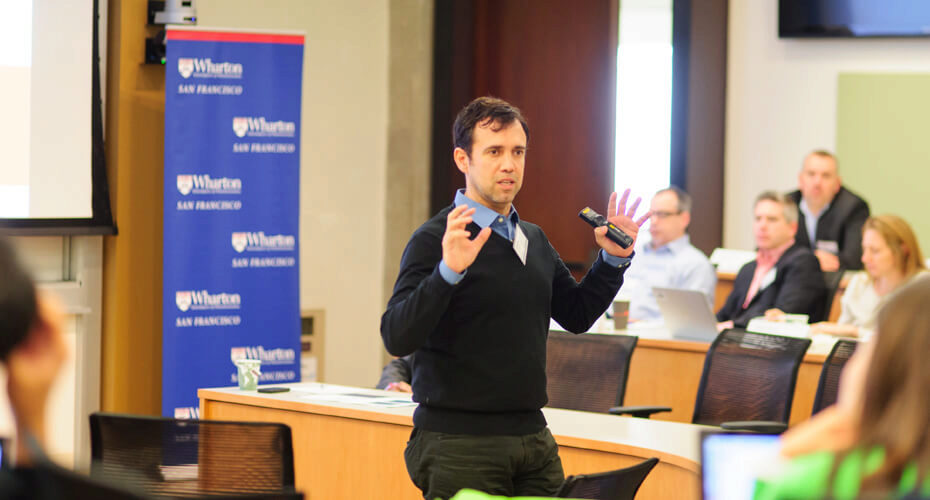
This first step involves developing hypotheses about what a successful outcome might look like. It’s crucial that the number of hypotheses isn’t unrealistically small, in which case some highly possible results might not be considered, or else too large, which would lead to an exponentially large number of variables the innovation team needs to consider.
This winnowing process, says Osorio, unfortunately occurs at a most inopportune time. “It’s like drinking from a fire hose. A lot of new information is coming in, and the team has to make sense of it.” Success or failure is contingent not only on the load of information coming in — with too much complex information, there is the risk of simple cognitive overload — as well as the way the information is being presented, and our own emotions about the problem. When emotions run high, as they often do with challenging situations, the chance of making the right decisions plummets. That means being on guard for this tendency is especially important, Osorio said.
“When things get tough, and you have two or three days when everything seems to be going south, emotions start to kick in, and the frequency of errors skyrockets,” he said.
This is where our biases often enter the picture, invariably to our disadvantage. Under stress, managers resort to tried and true patterns. But of course, they too often end up using a game plan from an entirely different strategic environment, with predictably undesirable results.
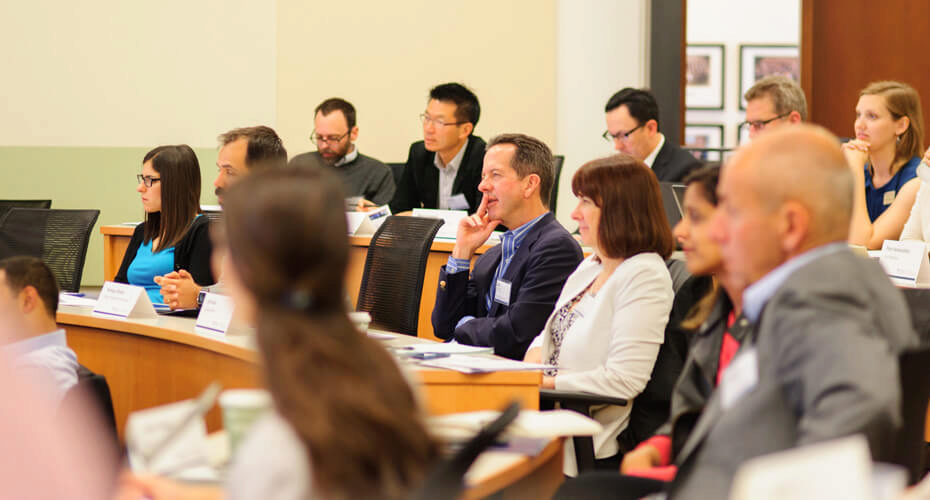
After studying numerous innovation efforts, Osorio discovered that there is one stage that is consistently the riskiest, when frustrations, and thus the propensity for mistakes, are highest. It’s often near what should be the end of the process, when a product is ready to be rolled out to customers, but when the team discovers that its initial assumptions weren’t quite correct and need tweaking.
It’s precisely at this stage when an innovation effort might need extra guidance to help it get back on the right path. Companies that are successful at innovation make plans for this eventuality before a project even begins, and thus aren’t caught flat-footed when it actually occurs.
The Digital Doctor Will See You Now
With seven million patients, DaVita is one of the country’s largest providers of kidney-related services, including dialysis. Until recently, explained Derek Schoonover, the company’s vice president for physician experience, innovation in the world of renal care only involved the dialysis units themselves, mainly through miniaturization. But this tradition of innovation does not address the sorts of digital disruptions now fueled by mobile phones, when patients expect their medical data to be instantly, easily available.
DaVita’s response has been to set up a number of in-house, digitally-oriented efforts that expand on the company’s core business. The only rule it has for these operations is that they have to be self-sustaining, without draining resources from the company’s main lines of business.
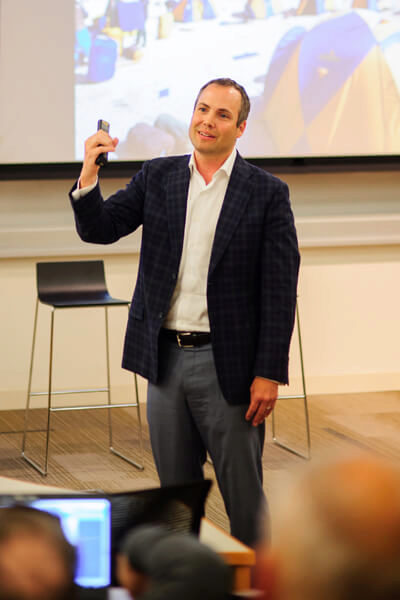
A typical example, said Schoonover, is “Falcon Physician,” a software project inspired by social media that knows which of a particular doctor’s patients are being treated at a given time in a given center, making it easy for physicians to make their rounds. Each patient’s records are easily accessible as the doctor moves from one person to the next. The purpose of the software, said Schoonover, is to create a sense of community with the patients using DaVita’s facilities.
The two-year-old Human Longevity, Inc., on the other hand, is seeking to expand the marketplace for a new generation of “Big Data” style genomics information.
Many clinical trials for drugs end up demonstrating that they are only effective in a relatively small number of patients, explained Scott Skellenger, the company’s vice president for technology product engineering. Because drug companies can’t predict in advance how many actual patients will respond positively to their compounds, low response rates translate to low marketability.
But with the new science of genomics, it becomes possible to determine, from an individual’s DNA, whether they might be among the lucky few who can benefit from a treatment that had previously languished on the shelf. Human Longevity’s B-to-B business makes its massive genomics library available to pharmaceutical companies, and that, said Skellenger, could result in a cascade of “new” drugs coming onto the market.
The company’s work is extremely computationally intensive, and so Human Longevity is a power user of new “cloud computing” services, such as those provided by Amazon. It’s a case of synergistic disruption, where advances in computing help enable equally dramatic advances in clinical care.
Vitality Health, which provides wellness programs for insurance companies, exemplifies the way a business can use technology disruptions to its advantage. The company provides a mobile app that prompts the customers of its clients to increase their daily activity, if only getting up and going for a walk. In doing so, it allows a much closer relationship between insurance companies and customers than had previously been possible.
There is clear evidence that turning sedentary adults into active ones — such as with 25 minutes of daily brisk walking — can add years to the average lifetime. And studies have shown that Vitality’s customers continue to use their apps long after users of other health-related mobile devices have given up with theirs.
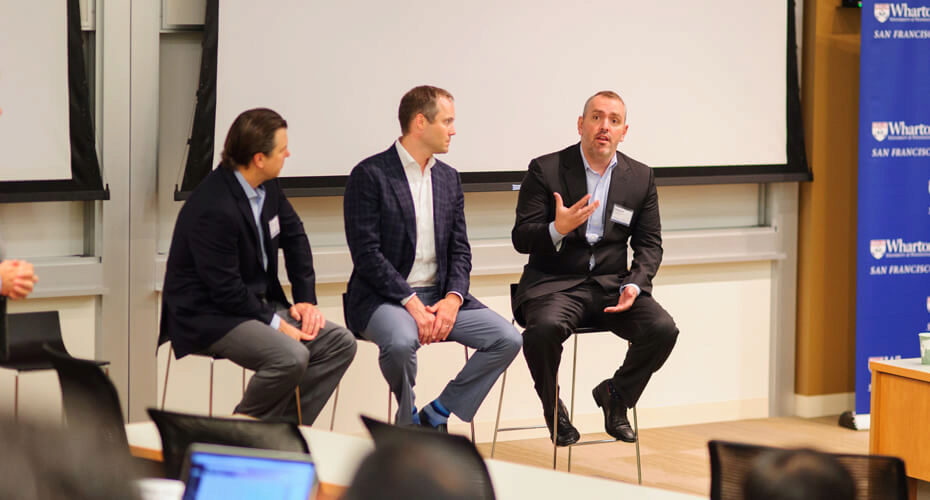
To achieve this success, the company uses a number of clever marketing programs to encourage app use. For example, it provides customers with a free Apple watch — but as a reward after they proven they can stay active for a specified length of time.
Stephen Mitchley, chief operating officer of Vitality Health, said the apps were of obvious benefit to their users. But they also help insurance companies, by helping them create much deeper relationships with customers. With a health app, the insurer and customer come into contact on a daily basis, something the company can use, for example, to raise awareness of other services the company provides.
“The ability to connect with the individual gives you the chance to develop a relationship, and then use that to drive the outcome that you want,” he said. “You’re forming bridges.”
Shopping in the Smartphone Era
The “on-demand” economy. Computer voice recognition. Crowdsourcing. Online shopping.
Those are all well-known currents in today’s ongoing digital revolution. And all of them, in their different ways, are helping to change the face of retailing.
DoorDash is one of a new generation of on-demand companies. Founded in 2013, it has a network of more than 20,000 part-time “Dashers” in nearly two dozen cities. The company is currently focused on food delivery, but it is also contemplating expanding into other areas. Everything from florists to sneakers are under consideration.
How does DoorDash decide on whether to proceed with an idea for a new business initiative? Matthew Rotella, the company’s head of business development, described a process in which managers brainstorm a new idea, then do preliminary due diligence to see if the idea has merit. If it does, an interdisciplinary team is assembled to conduct a test, with representatives from crucial departments such as marketing and engineering joining forces. After the test, a thorough post-mortem is conducted, and only then can a project proceed.
“We don’t have a lot of resources, so we have to do a lot of work up-front before we embark on something,” said Rotella.
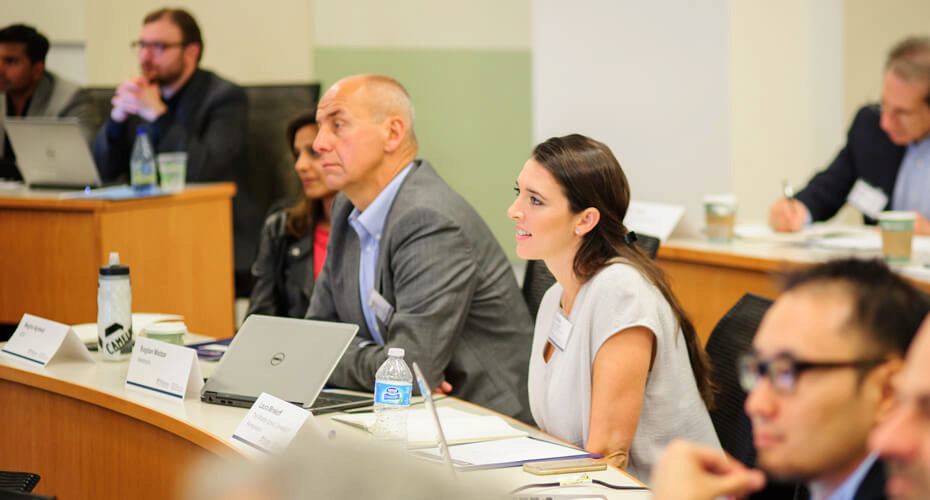
In contrast to DoorDash, Amazon would have to be considered rich in resources, and has used them to develop the voice recognition technology at the heart of its wildly successful Echo product. Echo is a home-based personal digital assistant that can handle an almost endless list of spoken requests, from weather forecasts to recipes.
Michael Francisco, business development partner for Alexa, the technology platform that is the “brains” of Echo, said that the entire product category grew out of a core Amazon commitment: to make customers’ lives easier.
“We asked ourselves: How do we help customers do what they do every day, but in a much easier, more simplified way?” he said.
Hence the attraction to voice. Most Echos are located in kitchens; users elbow-deep in dinner prep don’t need to track down their mobile phone or log in on their laptops. Instead, they just ask Alexa what they need.
One of the keys to Echo’s success is that Amazon hasn’t taken a go-it-alone strategy with the Alexa platform. Instead, it’s designed it as an open ecosystem, one to which interested third parties can add their own new ideas.
“Innovation is much bigger than ourselves,” said Francisco.
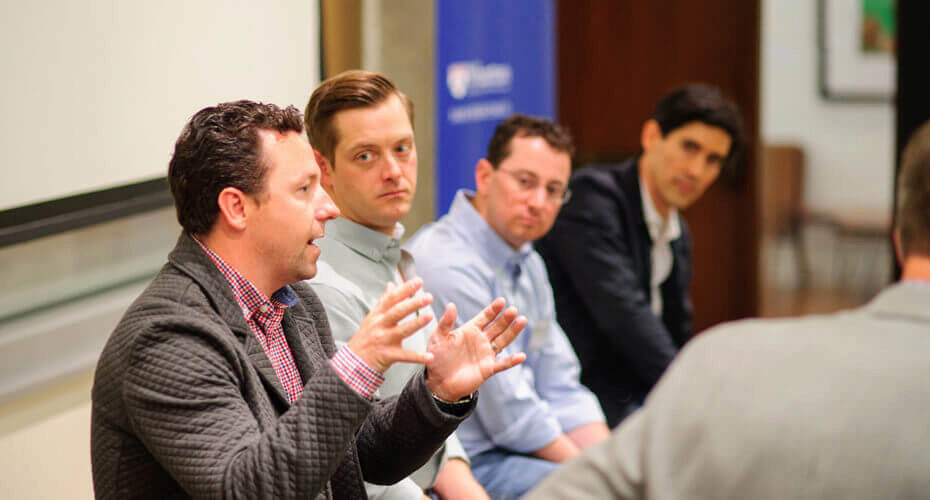
Meanwhile, at Betabrand, managers have learned that innovation often needs to occur in small, carefully calibrated steps.
Betabrand is a something of a crowdsourced clothing company. The company proposes new designs on its website; if enough people express an interest in it, the product gets made and marketed. Betabrand’s biggest hit to date is a line of women’s yoga pants that are styled so that they can double as office attire.
Chief marketing officer Aaron Magness said the company uses a “Testing to Success” strategy throughout the design and marketing process. A-B testing is a common technique in the online world, but Betabrand takes it further than most retailers, down to fine-tuning the marketing images. In selling a new men’s shirt, for example, the company tested the effect of whether or not to put a beard on the model, then tested how long the beard should be. The winner ended up being a relatively full beard, as might be expected from Betabrand’s hipster-skewed audience.
If Betabrand represents the small, artisanal clothes maker, Levi’s would be its polar opposite. Rico Arrastia, the company’s senior director for wholesale e-commerce, described how Levi’s has navigated huge trends that have beset retailing in recent years, notably the rise in online shopping at the expense of the brick-and-mortar experience.

Levi’s, said Arrastia, is still committed to traditional retail, though it will sometimes use a store as a test bed to learn about shifting trends and tastes.
But with more and more of its business coming from the web, especially via Amazon, the company is being forced to acquire new skill sets.
For example, many websites, including Amazon, implement auto-complete, filling in what they think a user is asking for. Not only do users more often than not accept one of the choices offered by auto-suggest, but, when they actually make a purchase, they usually do so from the first page of offered results. Levi’s, said Arrastia, is thus being forced to understand extremely subtle traits of online consumer behavior.
How Digital Technologies are Reshaping Mobility
Digital disruption is occurring in transportation as much as in any other industry. For one big automaker, it’s forcing planners to reevaluate their company’s mission. Megan Neese, senior manager of Nissan Motor’s Future Lab, described a process in which Nissan has shifted away from an emphasis on specific car models, and is now thinking of itself more as a “systems” company — even to the possible exclusion of making cars in certain markets.
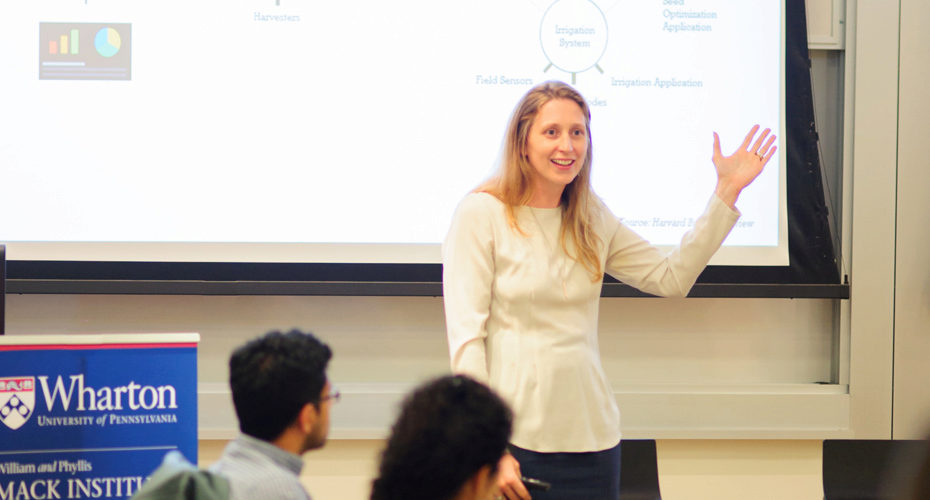
The company’s real business, said Neese, is not cars, but “mobility.” Previously, the company might have come up with the idea for a new car model — a convertible, perhaps — and then developed the marketing necessary to interest customers.
Now, though, the company does an intensive study of the markets it is interested in entering, and then develops mobility solutions appropriate for their needs. In giant mega-cities of the developing world, for example, congestion and pollution are extensive, to the point where most vehicles are motorcycles rather than automobiles. An appropriate mobility product for that sort of market, said Neese, might be a new breed of “intelligent helmet,” that uses new technologies to deliver information to the rider about traffic, weather, and other mobility-related issues.
“We are interested in how people move in the city,” she said. “I know that sounds broad, but it changes the way we do our research and the kinds of questions we ask.”
Read more: Megan Neese discusses Nissan’s preparation for the era of self-driving cars.
Lyft is one of the disruptors that is usually mentioned in the same breath as Uber; Annabel R. Chang, the company’s director of public policy, said the company started as a ride-sharing service, but was only able to blossom into the convenient solution it is today when mobile phones became ubiquitous.
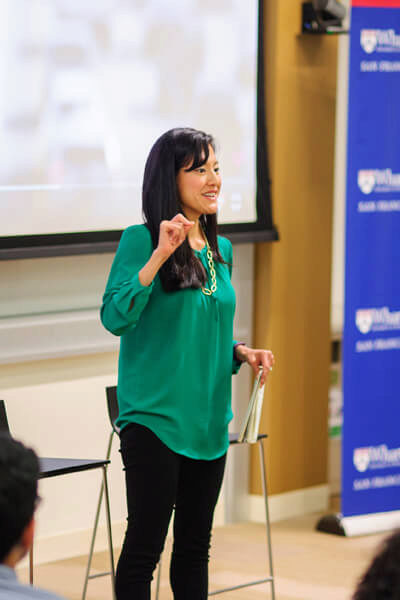
One striking social trend is working in the company’s favor, Chang said. Millennials don’t have their parents’ devotion to owning their own cars; she cited statistics demonstrating a significant decline in driver’s license applications by sixteen-year-olds.
“Cars used to be how you defined yourself,” she said. “But that is no longer the case. We are seeing huge shifts in how people get around.”
One of those shifts, she said, is that riders are increasingly willing to share their rides with other passengers. Lyft offers its popular Lyft Line, in which passengers headed in the same direction share the same car at lower prices.
Chang also expects autonomous cars to become increasingly popular, something that boosters say could potentially reshape urban environments. Large parking structures, for example, might no longer be necessary, and the space could be devoted to housing instead.
“We are going to see autonomous vehicles totally change the landscape of the city,” she said.
Disruption Lessons from the Field
Digital disruption is enough of a trend that patterns are emerging at the companies that study it. CA Technologies and Cisco are both involved in their own efforts and have also examined attempted disruptions at other companies, and so they articulated some of the patterns they’ve observed.
Prashanth Shetty, vice president for security and APIM marketing at CA Technologies, the enterprise software vendor, said that his company has discovered that successful disrupters have a number of shared characteristics: They understand the importance that mobile-based software apps should play in driving innovation. They are keenly aware that new sales channels are emerging. And they have internalized the “experiment and fail quickly” model of innovation, in which new ideas are quickly tested and then discarded if they don’t prove useful.
The sales cycle, said Sid Kumar, CA’s global head of digital sales, is becoming more complex because of the way more potential decision-makers inside a company have access to information about your products.
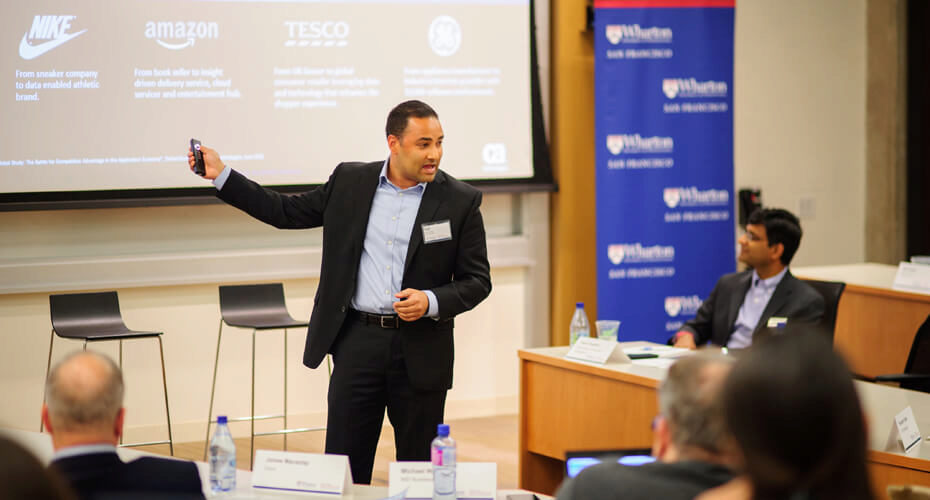
“Buyers are dealing with too much information, and more and more people are involved in the sale,” he said. “Digitization forces you talk to dozens of people who are now involved in a purchase decision.”
Networks are one of the foundations of the digital infrastructure, and Cisco is one of the world’s leading providers of networking equipment. But it, too, must face up to the challenges of digital disruption, said James Macaulay, director of its Digitization Office.
The process, he said, is continual. “Disruption requires business model innovation. We change operating models all the time.”
And, said Macaulay, it’s a company-wide process; at Cisco, analytic information about results is diffused throughout the organization, in order to allow contributions from all parts of the company.
As a result of its efforts, Macaulay said Cisco has discovered four important lessons about what makes for successful digital disruption: listen to customers, make sure all parts of the company are aligned, invest in the future, and recognize the importance of moving quickly and with tenacity.
Learn More
Download the Mack Institute’s White Paper on digital disruption.




